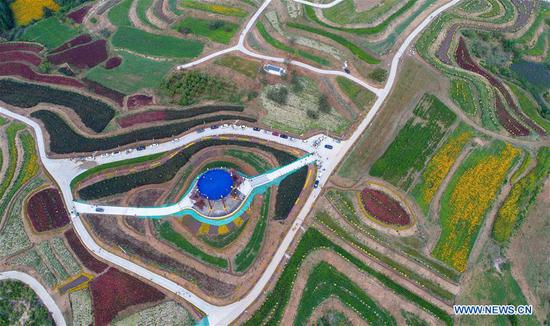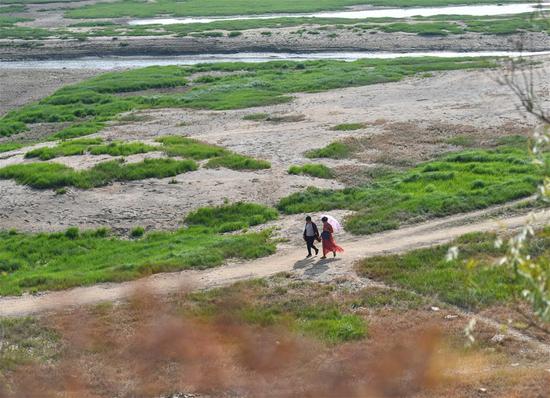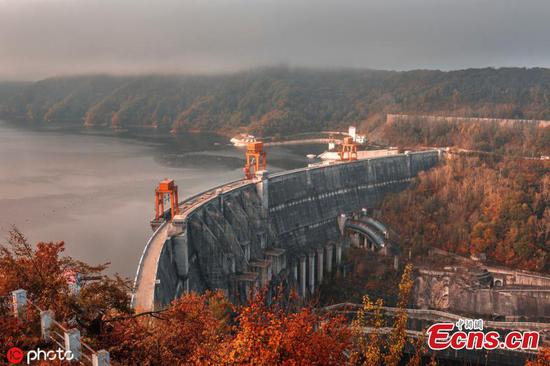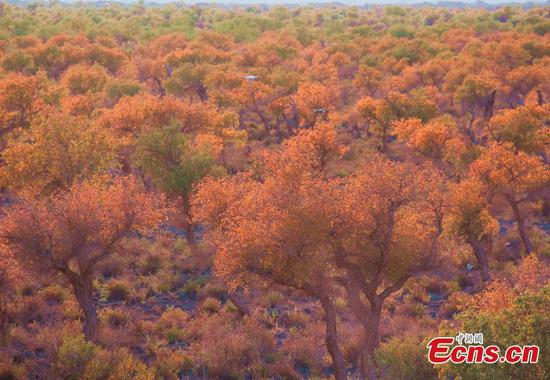
Red deer in Qilian Mountains. (Photo by Wu Xuefeng/for chinadaily.com.cn)
All of China's 10 pilot national parks will have finished construction next year, with some parks having made significant achievements in ecological and wildlife protection, the forestry department announced on Thursday.
Since 2015, China has approved the construction of 10 pilot national parks covering more than 20 square kilometers.
In Northeast China Tiger and Leopard National Park, the number of endangered wild animals in the park has witnessed satisfying growth in the past two years, the National Forestry and Grassland Administration said on Thursday.
Both the Siberian tiger and Amur leopard-two species listed as critically endangered in the International Union for Conservation of Nature's Red List-have seen a population increase, with 10 young baby Siberian tigers and six Amur leopards born during the period, according to Zhang Shanning, deputy head of the park's management bureau.
Since 2017, the park has received more than 668 million yuan ($93 million) from the central government to boost tourism through ecological protection. The money also supported wildlife surveillance and regular patrols to stop poaching.
According to a guideline released by the State Council early this year, the strictest protection for parks should be within "red line" zones-a key government strategy putting designated areas under mandatory protection.
Based on the guideline, development and construction that could hurt the ecosystem, as well as commercial logging, will be prohibited, and practices such as illegal mining, discharging pollutants or poaching will be punished.
In Giant Panda National Park, 319 cases of illegal use of forest land, 621 cases of commercial logging and 462 criminal cases of wildlife hunting and trading were handled last year.
In Qilian Mountain National Park, 114 mines have been closed, with all facilities and buildings dismantled or removed. Moreover, 25 tours that posed threats to the ecological system have been modified.
Relocation of residents who used to live in the core protected areas in most national parks is also speeding up.
In Gansu province, nearly 2,900 residents have been moved from core protected areas in Qilian Mountain National Park, according to Wang Hongbo, director of the park's management bureau.
"Many of them used to be herdsmen," he said."In order to help them find new jobs, we provided each family with a position as a forest or grassland ranger in the national park."
In the Giant Panda National Park, the local government has provided nearly 22,000 jobs for people, helping them make a living through ecological protection. For example, residents in Tangjiahe nature reserve in Sichuan province are now making a profit through building bee farms, according to Xiang Kewen, director of the park's management bureau.
"We will further explore new measures to develop more green industries and encourage local people to engage in the protection of ecology through the construction of national parks voluntarily," Xiang said.


















































